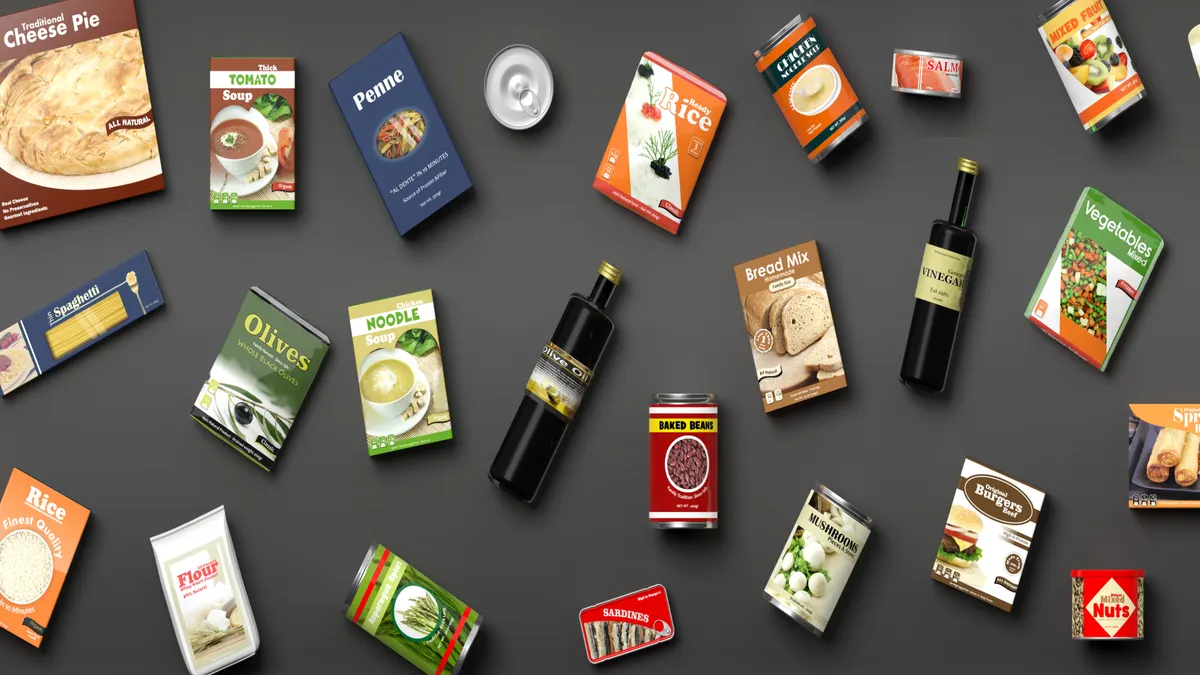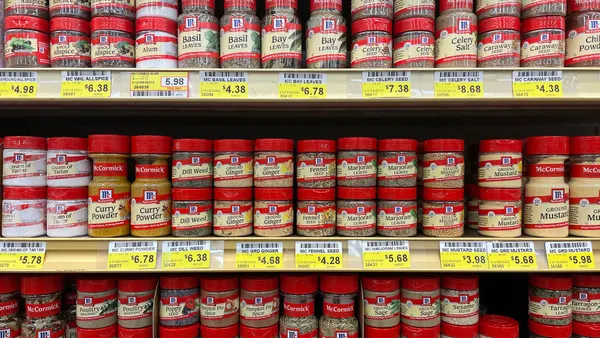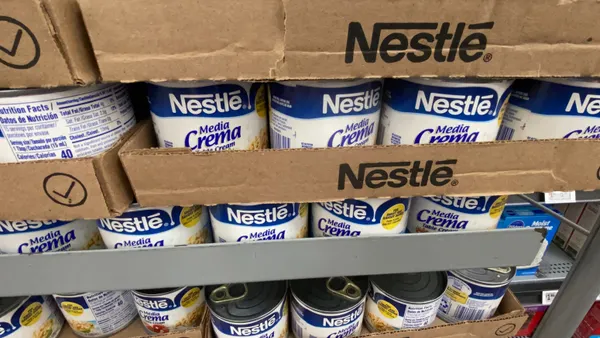Dive Brief:
- The U.S. Department of Agriculture has announced Start Simple with MyPlate, a new outreach campaign to help make nutrition information easier to use and assist Americans in making healthy food choices.
- The department said the campaign is designed to give consumers ideas and tips from the five MyPlate food groups so people can easily incorporate them and improve their health and well-being over time. The food groups include fruits, vegetables, grains, protein foods and dairy. At the same time, the USDA recommends limiting sodium, saturated fats and added sugars.
- "We've been thinking at USDA about how to help people find simpler ways to move towards better eating," Agriculture Secretary Sonny Perdue said in a video. "This is certainly important because about half of all American adults have one or more preventable chronic diseases like hypertension or diabetes."
Dive Insight:
The department said there is plenty of nutritional information available out there, and the goal is to help consumers find the best nutritional approaches to assist them in a more personalized way. The Start Simple with MyPlate site allows participants to determine a target caloric level in either English or Spanish based on age, gender, height, weight and level of physical activity.
Once the specific calorie level is determined, participants can access daily recommended amounts for each food group to maintain their current weight or change it. The site also provides tips to reach nutritional goals through making small changes, being active in ways that work, teaming up with friends and celebrating successes.
Consumers might be more likely to use practical guidelines like these since they're coming from the USDA and aren't suggesting they make dramatic dietary changes in order to get healthier. Specialty diets are trendy, but they might not necessarily be adhered to if they require too much of lifestyle change. Simple suggestions about how much of the five food groups should be consumed each day to hit a certain caloric level could be just what some consumers need to achieve and maintain a healthier weight.
CPG manufacturers and retailers also may need to watch how closely consumers adhere to the campaign. While it's uncertain how much it will affect eating habits, a jump in fruits and vegetables or even dairy, for example, could prompt consumers to purchase more of these items. Food makers and grocers would need to incorporate more of these ingredients into their products or carry more of them at the store. Most likely Start Simple with MyPlate will become part of the broader narrative where consumers already are shifting toward healthier, natural and organic products — prompting large food manufactures to reformulate or introduce products that mirror these preferences.
The department's most recent version of MyPlate might resonate better with U.S. consumers than its previous one introduced in 2011, which reportedly wasn't familiar to many of them and also didn't resemble what most people eat. According to a 2018 survey from the International Food Information Council Foundation, only six in 10 people had previously seen the MyPlate graphic, and many of them said they were consuming more protein and vegetables and fewer grains than what the USDA recommended.
Start Simple with MyPlate could see more success since it's more interactive and customizable, so those who give it a try might find it easier to use and more pertinent to their daily lives. There are also myriad resources posted on the site to help with menus and recipes, eating on a budget, background information on each of the food groups, and many more.
The Dietary Guidelines for Americans are supposed to be updated every five years, with the next version scheduled to come out in 2020. The USDA's new Start Simple with MyPlate is likely to be incorporated into those guidelines, especially if the latest version proves to be popular — and practical — with consumers wanting to adopt healthier eating styles.












